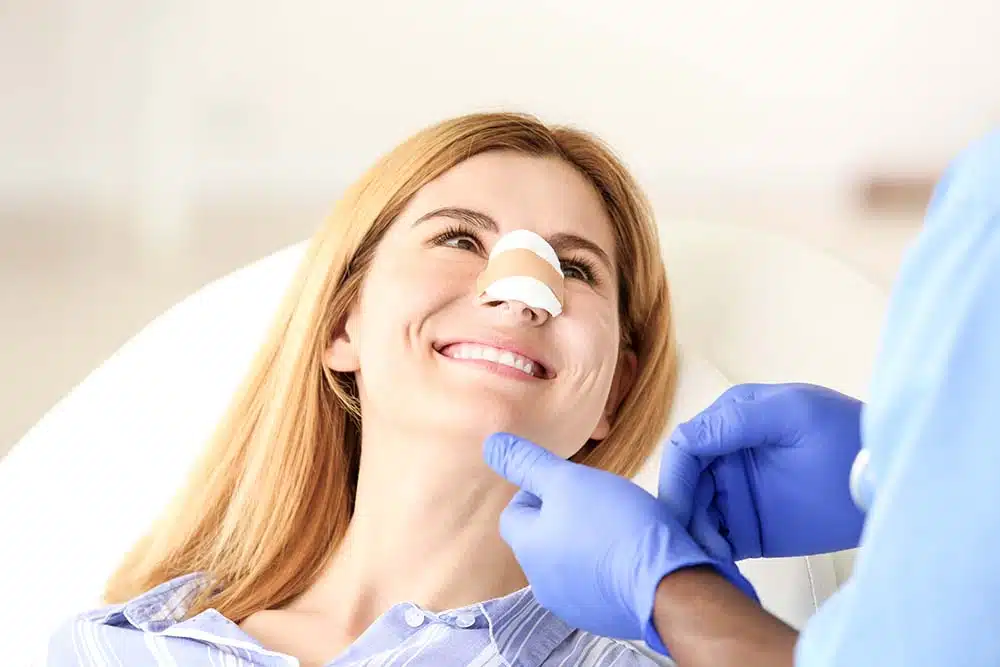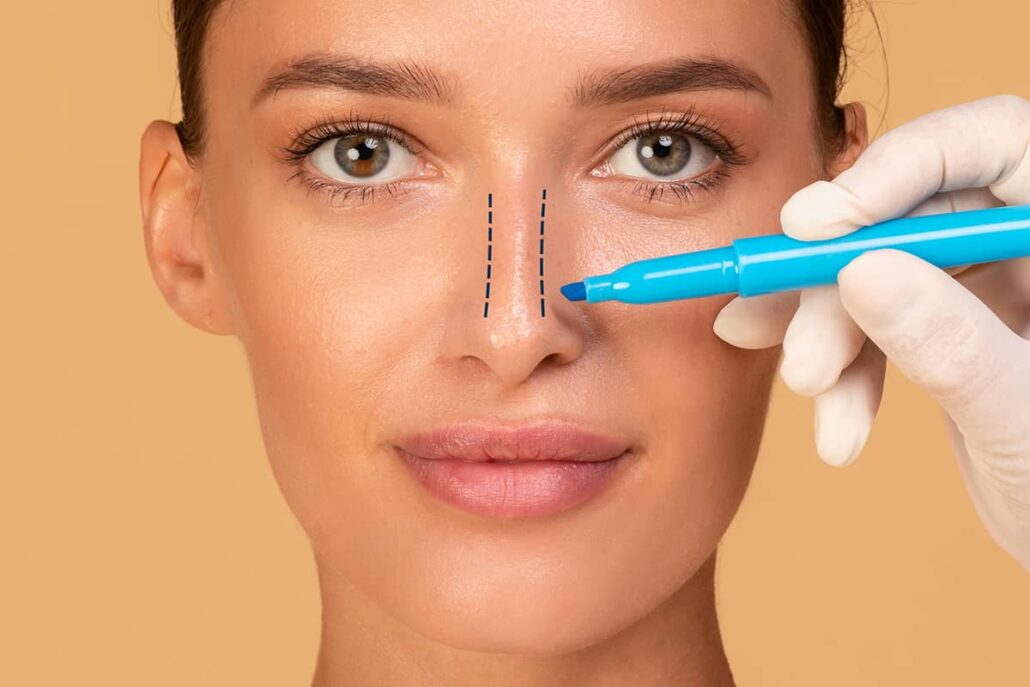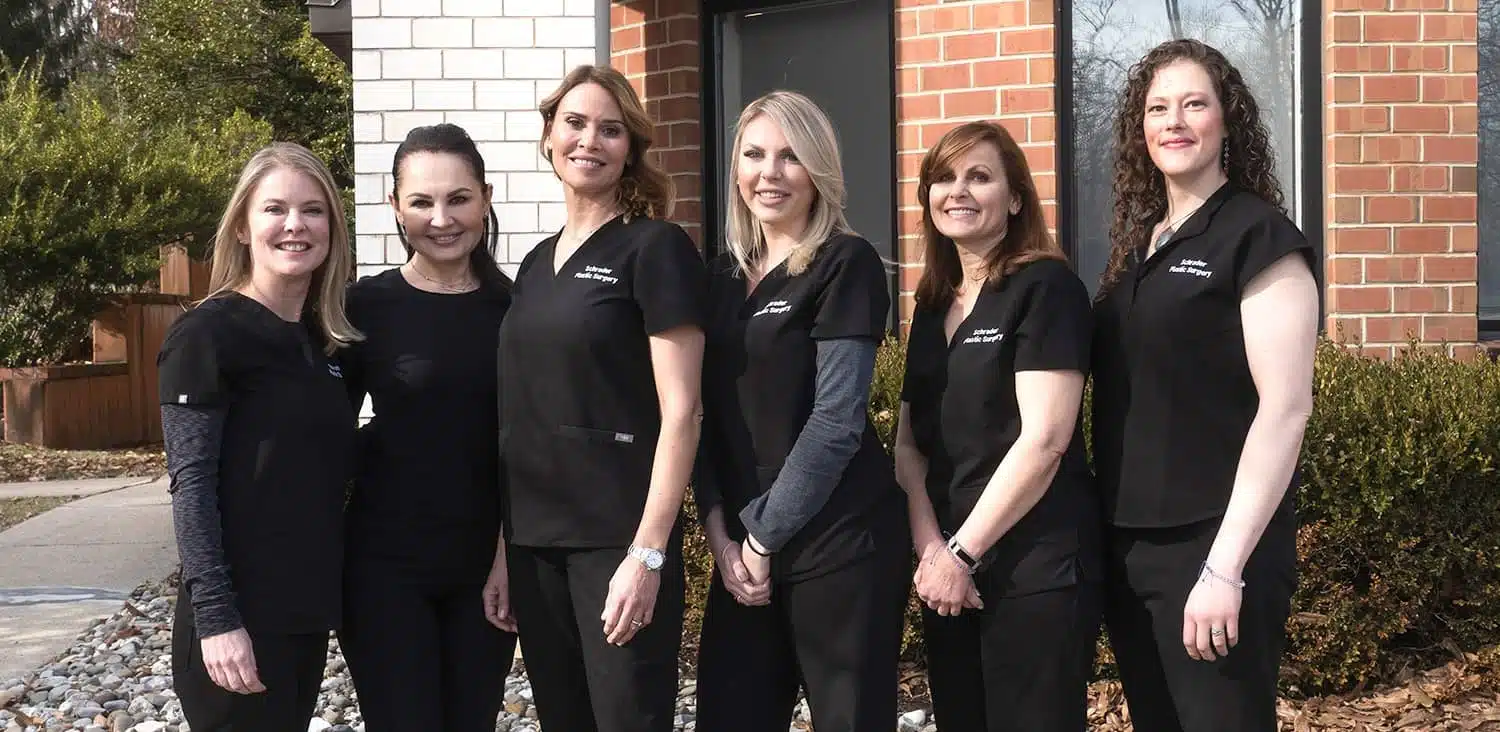One cosmetic surgical procedure that can improve the look and function of the nose is closed rhinoplasty, which is also called endonasal rhinoplasty.
The treatment is carried out by creating incisions within the nostrils, which leads to a less noticeable scarring and a more realistic appearance.
Read on to learn about closed rhinoplasty, its advantages, and what to expect during the process.

Understanding the Closed Rhinoplasty Procedure
In order to reach the nasal anatomy on the inside, surgeons performing closed rhinoplasty make incisions inside the nostrils. This technique allows the physician to remodel the nasal framework without making any external incisions, resulting in scar-free nose surgery. Closed rhinoplasty is good for contouring the nose tip, shortening the nose, and reducing a bump or dorsal hump.
During the procedure, the surgeon separates the nasal skin from the bone and cartilage underneath, enabling the reshaping of the nasal framework as needed. To achieve the intended outcome, it may be necessary to make adjustments to the nasal membrane, reposition the nasal bones, trim or add cartilage grafts, or both. The surgeon will re-drape the skin of the nose and close the interior incisions after making the required changes.
The Benefits of Closed Rhinoplasty
Some of the advantages of choosing a closed rhinoplasty technique over other types of nose surgeries include the following:

- Less invasive: Closed rhinoplasty does not require an external incision on the columella (the tissue that divides the nostrils), making the surgery less invasive than open rhinoplasty.
- Reduced scarring: Because all incisions are made inside, there is no visible scarring. This can be especially advantageous for people who are concerned about the possibility of scarring after surgery.
- Shorter surgery time: Closed rhinoplasty typically takes less time to perform than open rhinoplasty, as there is no need to make an external incision or lift the nasal skin to access the internal nasal structure.
- Quicker recovery: Patients who have closed rhinoplasty typically report less edema and a faster recovery period than those who have open rhinoplasty because the interior incisions and minimal dissection of the nasal skin result in less tissue stress.
- Preservation of nasal structure: Closed rhinoplasty allows the surgeon to maintain the natural nasal anatomy, which can help to preserve the structural integrity of the nose and minimize the risk of complications.
How to Prepare for a Closed Rhinoplasty
Proper preparation for a closed rhinoplasty procedure is essential to ensure a smooth surgery and optimal results. Here are some steps you can take to prepare for your closed rhinoplasty:
- Choose a qualified surgeon: Make sure you get the best care and the results you want by choosing a board-certified facial plastic surgeon who has a lot of expertise with closed rhinoplasty treatments.
- Schedule a consultation: During your appointment, your surgeon will assess your nasal structure, discuss your aesthetic goals, and decide whether closed rhinoplasty is the right option for you. This is also a time to ask any questions you may have concerning the procedure or the healing process.
- Follow pre-operative instructions: In order to ensure a smooth procedure, your surgeon will give you certain instructions. Some of these precautions include not drinking or smoking before the surgery, stopping some medications, and making transportation arrangements for after the procedure.
- Prepare your home for recovery: Make sure your post-surgery recovery space is clean and comfy. To speed healing, stock up on ice packs, OTC painkillers, and soft meals.
What Happens During a Closed Rhinoplasty Procedure
A closed rhinoplasty procedure typically takes 1-2 hours to complete and is performed under general anesthesia. Here is an overview of what happens during the surgery:
- Anesthesia: To make sure you are comfortable and safe during the surgery, your surgeon will give you general anesthesia.
- Incisions: To access the internal nasal structure, the surgeon will create small incisions within the nostrils.
- Reshaping: If the surgeon wants to help you reach your goals, he or she may change the shape of the nose bones, cartilage, or membrane.
- Closure: Once the necessary adjustments have been made, the surgeon will close the internal incision sites with sutures.
- Recovery: After the surgery, you will be taken to a recovery area where you will be monitored by medical staff until you are ready to go home.
Recovery and Aftercare for Closed Rhinoplasty
Closed rhinoplasty recovery time is typically shorter and less unpleasant than open rhinoplasty. Here are some tips to ensure a smooth recovery:
- Rest and elevate: Following surgery, it is important to get lots of rest and keep your head up for the first few days. This will help reduce swelling and speed up the mending process.
- Avoid strenuous activities: Avoid intense activities, heavy lifting, and exercise for 2-3 weeks after surgery to prevent problems and enhance healing.
- Follow post-operative instructions: Abide by the given instructions on how to care for your nose and incisions during the recovery process.
- Attend follow-up appointments: It is critical to attend all scheduled follow-up sessions with your surgeon to track your progress and resolve any problems.
- Be patient: The final results of your surgery may not be apparent for several months, as the nasal skin, soft tissues, and internal nasal structure continue to heal and settle into their new positions.


Trust your face to a specialist
My Goal is to create Harmony, Balance & true Beauty
Potential Risks and Complications of Closed Rhinoplasty
Closed rhinoplasty, like any other surgical treatment, carries the risk of complications. Some of these dangers are:
- Infection: Although rare, infections can occur after closed rhinoplasty, so make sure to follow post-operative care instructions to prevent them.
- Bleeding: Some bleeding after rhinoplasty is normal, but excessive bleeding can pose problems. Heavy lifting and hard exercise can raise blood pressure, so avoid them during recovery.
- Anesthesia complications: General anesthesia carries risks, including allergic reactions and breathing difficulties, therefore discuss any concerns with your anesthesiologist before the procedure.
- Dissatisfaction with results: Patients could be dissatisfied with the outcome of their closed-nose procedure in some instances. If you are unhappy with the results or have concerns, revision rhinoplasty may be the way to go.
It is crucial to discuss these risks and any concerns with your surgeon during your consultation to make an informed decision about closed rhinoplasty.
The Long-Term Results of Closed Rhinoplasty
Closed rhinoplasty can treat problems including a crooked nose or nasal valve collapse, therefore improving your face appearance and nasal function and producing long-lasting, natural-looking results. Still, it’s important to have reasonable expectations and realize that swelling and the continuous healing processcould make the final result not clear-cut right away.
Most patients can anticipate to see the complete benefits of their closed rhinoplasty surgery, or closed nose job, 6-12 months after the procedure. During this period, the nasal tissues, particularly the nasal membrane and tip area, will settle and swelling will progressively reduce, displaying the new nose shape and enhanced facial equilibrium.
To maintain the long-term results of your closed rhinoplasty, it is important to:
- Avoid trauma to the nose, such as contact sports or other physical activities that may cause injury
- Protect your nose from sun exposure, as this can cause discoloration and affect the healing process
- Follow a healthy lifestyle, including a balanced diet and regular exercise
- Schedule regular follow-up appointments with your facial plastic surgeon
By adhering to these guidelines and working closely with your facial plastic surgeon, you can enjoy the long-lasting benefits of your closed rhinoplasty procedure and maintain a harmonious, natural-looking nasal structure for years to come.
Why Closed Rhinoplasty May Be the Right Choice for You
Closed rhinoplasty may be the right choice if you seek a less invasive procedure with minimal scarring and quicker recovery time. This technique is particularly suited for patients who require minor to moderate adjustments to their nasal structure, such as reshaping and shortening the nose or removing a nasal hump.
By choosing a qualified and experienced facial plastic surgeon, you can ensure that your closed rhinoplasty procedure will be tailored to your unique needs and goals, resulting in a natural, harmonious appearance that enhances your facial features.
If you’re considering closed rhinoplasty, schedule a consultation with a double board-certified facial plastic surgeon like Dr. Nicole Schrader to discuss your options and determine if this procedure is the best fit for you. Call the office at 609-279-0009 to take the first step toward achieving the nose you’ve always desired.
